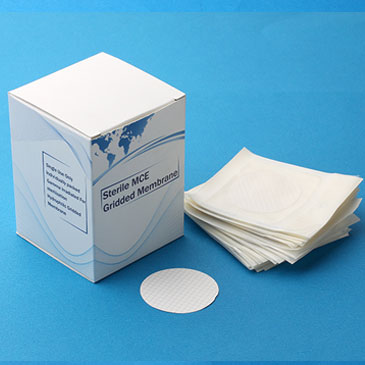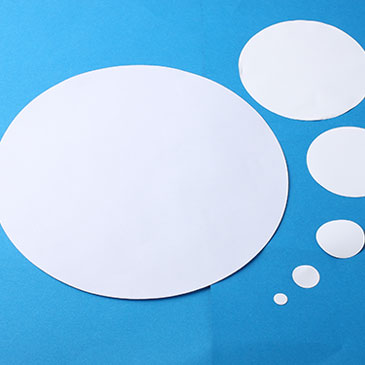Membrane filtration is the most effective and affordable technique that uses a semi-permeable membrane to separate particles or molecules from a liquid or gas stream. Membrane filters are also called microporous or biological filters. The membrane works as a barrier, allowing some molecules to pass through while preventing others.
There are many different kinds of membrane filters, microfiltration, ultrafiltration, nanofiltration, and reverse osmosis. Membrane filtration is a growing field in water treatment. The production of beverages and food, water treatment, and medical applications are all regularly used in the process of membrane filtration. By using membrane filters, it is feasible to reduce overall manufacturing costs while simultaneously improving product quality.
Different Types of Membrane Filtration
Membrane filtration is a cross-flow dynamic filtering method. There are primarily four types of membrane filters, These filters are divided according to their pore size:

Microfiltration
Microfiltration is a type of separation technology for excluding pollutants such as bacteria from process fluids, lipids, and suspended particles. Depending on the purpose, the material of construction for micro filter surfaces might be plastic, textile fabric, or stainless steel. Some new technology membranes are built of durable materials and have a big area format to give a good economy and exceptionally stable performance regardless of feed water variations. MF membranes can filter out particles larger than 0.1 microns.
Cross-flow microfiltration (MF) is a particularly efficient technique for eliminating large colloids, microorganisms, and minute suspended particles from vast quantities of water. Operating pressures are lower for membrane filters than for other kinds of membrane filters. This system typically uses backwash and air scrubbing procedures with a working pressure of 1 to 2 bar to reduce the need for chemical regeneration or replacements.
Application
It is used in water treatment plants to remove infections such as the protozoa Cryptosporidium and Giardia lamblia, among others.
It is used in the industry for cold sterilization of beverages and pharmaceuticals. It essentially removes germs and other undesirable substances from beverages such as juice, wine, and beer.
Microfiltration is also utilized in the refining of petroleum. It filters out particles from flue gases. It is used in the dairy sector to eliminate germs and their related spores from milk.
Microfiltration is also used in the paint and adhesive industries.
Ultrafiltration
Ultrafiltration is a cross-flow separation process that uses low pressure. It helps to remove tiny particles, macromolecules, colloidal particles, proteins, microbiological pollutants, and big organic molecules from the input stream. Ultrafiltration membranes can remove particles ranging in size from 0.1 to 0.01 microns. All dissolved salts and smaller molecules can pass through this type of membrane. The ultrafiltration system is running at around 90% recovery. As a result, 90 percent of the feedstock will be used as permeate, and the remaining 10 percent will contain all of the particles that would be drained if the feedstock were rejected.
Application
UF is used in the manufacture of potable water. It cleans water from particles and macromolecules.
It is used in the dairy industry to produce protein concentration. Whey protein concentrate (WPC) and lactose-rich permeate are obtained during the cheese whey processing.
Used in the manufacture of cheese.
It contributes to the elimination of germs from milk.
It isolates paper pulp mill effluent.
Fruit juice is clarified and concentrated using this method.
Dialysis and other blood therapies are performed in medical labs.

Nanofiltration
A nanofiltration membrane’s pore size spans between 0.001m and 0.01m. The nanofiltration membrane has decreased pore sizes than microfiltration and ultrafiltration. It means the separation of multivalent ions, synthetic colors, sugars, and particular salts. PH, temperature, and time are factors that may be used to regulate the size of pores throughout the development process. There are 1 to 106 pores per cm2 depending on the material. Polyethylene terephthalate and other materials are used in its construction.
Application
For continuous homogeneous catalyst recovery and product polishing in bulk chemistry.
It can be used to gently separate and enrich natural ingredients from crude extracts in the industry of natural essential oils.
Amino acids and lipids are extracted from blood and other cell cultures for use in the medical field.
Nanofiltration is used in oil and petroleum chemistry to eliminate tar components from feed and to purify gas condensates.
Reverse Osmosis (RO)
Reverse osmosis (RO) includes the best separating membrane available except for water. It can hold molecules due to the tiny pores, osmotic pressure was necessary. Reverse osmosis systems are designed and staged in single or multiple passes for exceptionally high recovery rates, minimal fouling performance, and chemical-free system stability.
Application
Reverse osmosis is utilized in drinking water filtration systems in homes.
It is also used for drinking water from salty water.
It is utilized in a reverse osmosis water purification unit (ROWPU), which is a self-contained water treatment facility.
It is also used to purify rainwater that has been collected in storm drains.
It is used in power plants to remove minerals from boiler water.
Use in the making of beer with a low alcohol content.
Conclusion
In this article, we’ve discussed MCE membrane filter, their types, and how we can apply them. Simsii is a leading syringe filter or membrane filter provider, serving its clients with outstanding customer service and high-quality laboratory filters. If you are also looking for the best membrane filter provider, you can simply contact simsii.net.
Read More: More Effective Ways to Understand the Syringe Filter
